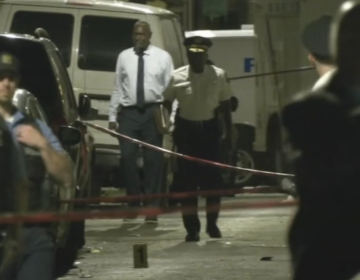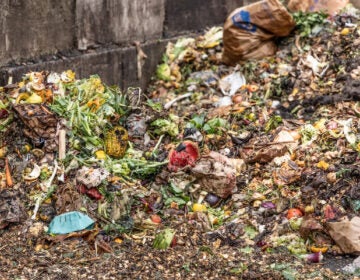Roxborough’s Schuylkill Center helps injured hawk take flight
Last week, an injured Cooper’s hawk was able to “get back on his wings” after the Schuylkill Center for Environmental Education’s Wildlife Rehabilitation Clinic gave him a tail feather transplant.
The bird was brought into the clinic with a damaged tail and head injuries two months ago. He was found at the edge of a road in Ambler, Pa. and brought into the clinic. Rick Schubert, clinic director, believes the bird was hit by a car and then dragged along the road.
“When he came in, he had a scab on head, his tail feathers were scuffed and basically destroyed,” said Schubert.
Although the bird recovered from the concussion, the damaged wing prevented him from flying. The Cooper’s hawk preys largely on other birds, and their wings enable them to navigate rapidly through heavily wooded areas to hunt for food.
“A bird’s tail is its steering and its brakes,” said Schubert. “Without it, there’s no control.”
Although new feathers would eventually grow back, the process would have left the bird in captivity for months. Because the Cooper’s hawk is a highly stressed bird and very difficult to be held in captivity, the clinic wanted to get him back to nature as soon as possible.
“It’s like if you were picked up by aliens,” said Schubert, “in the birds mind it’s fighting for its life. A wild animal in captivity can literally become stressed to death, so we keep them in cages shielded from our view.”
In order to get the hawk back into the sky, the clinic decided on a procedure called “imping,” which takes donor feathers and attaches them to the live bird. Over time, the birds new feathers will grow back naturally and push the grafted ones out.
During the 45-minute procedure, the hawk was sedated and wore a hood covering his eyes to minimize stress. Each feather was meticulously sorted and labeled by clinic staffers before being put into place. After cutting down the damaged feathers, bamboo skewers and epoxy were used to attach the new feathers.
Before being released, the clinic supervised practice flights until they felt sure that his wings were working properly.
“When he tried out his tail for the first time, he looked a little confused initially, but he took to his new tail pretty quickly,” said Michele Wellard, assistant rehabber at the clinic.
The hawk was eventually released in a wooded area of Montgomery County.
“I released him in a remote location in Montgomery County. It was a park-type area with a lot of land around it,” said Schubert.
Out of the three to four thousand animals the clinic takes in each year, Schubert estimates 100 to 150 are birds, specifically birds of prey like hawks, owls, vulcans and falcons.
“Most are hit by cars, or they have secondary poisoning after consuming a rodent who ate poison. Others have gunshot wounds,” said Schubert.
Schubert, who started working in wildlife rehabilitation in 1998, says his work involves fixing the harm that wild animals face because of people, not nature.
“All of the animals that we treat are hurt from what man is doing to the environment – and that’s our fault – that’s not nature taking its course,” said Schubert. “I have a great desire to make that right.”
WHYY is your source for fact-based, in-depth journalism and information. As a nonprofit organization, we rely on financial support from readers like you. Please give today.




